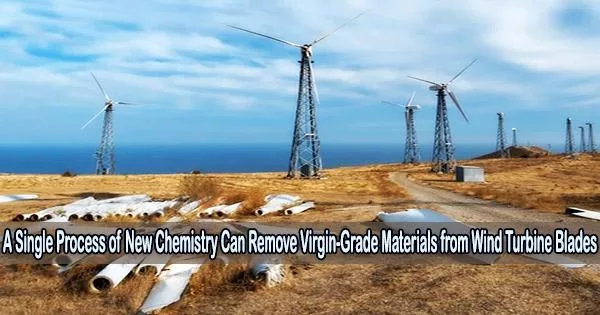The new chemical method can be used on a variety of so-called fiber-reinforced epoxy composites, including some materials that are reinforced with particularly pricey carbon fibers, in addition to wind turbine blades.
Thus, the procedure can help create a possible circular economy in the wind turbine, aerospace, automobile, and space industries, where these reinforced composites are used for load-bearing structures due to their light weight and extended endurance.
Being designed to last, the durability of the blades poses an environmental challenge. When wind turbines are decommissioned, their blades typically end up at landfills for garbage because they are so hard to decompose.
If no solution is found, we will have accumulated 43 million tonnes of wind turbine blade waste globally by 2050.
The recently discovered method is a proof-of-concept for a recycling approach that can be used for the great majority of both existing and currently produced wind turbine blades, as well as other epoxy-based materials.
Nevertheless, we see it as a significant breakthrough for the development of durable technologies that can create a circular economy for epoxy-based materials. This is the first publication of a chemical process that can selectively disassemble an epoxy composite and isolate one of the most important building blocks of the epoxy polymer as well as the glass or carbon fibres without damaging the latter in the process.
Troels Skrydstrup
The results have just been published in the leading scientific journal Nature, and Aarhus University, together with the Danish Technological Institute, have filed a patent application for the process.
In particular, the researchers have demonstrated that they can separate the epoxy matrix and release one of the epoxy polymer’s initial building components, bisphenol A (BPA), and completely intact glass fibers in a single procedure utilizing a ruthenium-based catalyst and the solvents isopropanol and toluene.
The catalytic system is not effective enough for industrial implementation, and ruthenium is a scarce and expensive metal, therefore the technology is not yet readily scaleable. As a result, the researchers from Aarhus University are still working to make this methodology better.
“Nevertheless, we see it as a significant breakthrough for the development of durable technologies that can create a circular economy for epoxy-based materials. This is the first publication of a chemical process that can selectively disassemble an epoxy composite and isolate one of the most important building blocks of the epoxy polymer as well as the glass or carbon fibres without damaging the latter in the process,” says Troels Skrydstrup, one of the lead authors of the study.
Troels Skrydstrup is a professor at the Department of Chemistry and the Interdisciplinary Nanoscience Center (iNANO) at Aarhus University.
The research is supported by the CETEC project (Circular Economy for Thermosets Epoxy Composites), which is a partnership between Vestas, Olin Corporation, the Danish Technological Institute and Aarhus University.
















